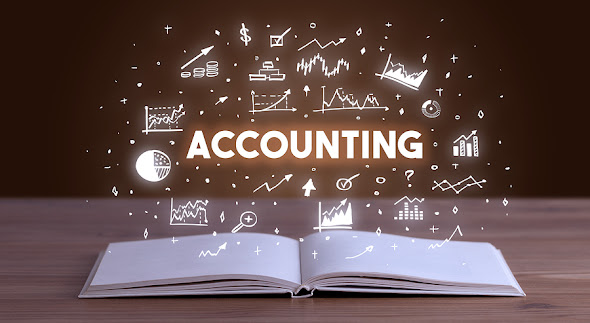Amazon Seller Accounting: Complete Guide for 2025

If you’re selling on Amazon, you know it’s not just about listing products and hoping they sell. Behind the scenes, a lot is going on—fees, taxes, inventory, and financial decisions that can make or break your business. That’s where Amazon seller accounting comes in. Whether you’re a new seller or have been selling for years, understanding accounting and bookkeeping is key to building a profitable business in 2025.
In this guide, we’ll walk you through everything you need to know about accounting for Amazon sellers, including challenges, tools, and best practices.
Why Amazon Seller Accounting Matters
Running an Amazon business isn’t just about sales—it’s about managing a real business. Here’s why accounting matters:
1. Know Your True Profit
It’s tempting to think, “I sold 500 units this month, so I’m making money.” But after Amazon fees, shipping, advertising, and returns, your net profit can be very different. Accurate Amazon seller accounting gives you a clear picture of your earnings.
2. Stay Tax-Compliant
Amazon sellers are responsible for income tax, sales tax, VAT, and sometimes GST. Mistakes can be costly, leading to fines or audits. Proper accounting helps you stay compliant and stress-free.
3. Make Data-Driven Decisions
Understanding which products are profitable, which ads generate ROI, and which inventory ties up cash requires accurate financial data. With proper Amazon seller bookkeeping, you can make informed decisions that grow your business.
Common Challenges in Amazon Seller Accounting
Accounting for Amazon comes with unique challenges:
-
Multiple Revenue Streams: Sellers often have bundles, subscriptions, or international sales.
-
Complex Fee Structures: Amazon charges referral fees, FBA fees, storage fees, and advertising fees. These vary by product and season.
-
Inventory Management: Tracking the cost of goods sold (COGS), returns, and aging inventory is essential.
-
Refunds and Returns: Returns impact revenue and inventory. Proper bookkeeping ensures accurate records.
Essentials of Amazon Seller Accounting
Here’s what every seller should know to keep finances in check:
1. Chart of Accounts
A chart of accounts organizes all financial activity. Key categories for Amazon sellers include:
-
Sales revenue by product category
-
Amazon fees and commissions
-
Shipping and fulfillment costs
-
Advertising expenses
-
Inventory purchases
-
Returns and refunds
-
Taxes payable
2. Bookkeeping Methods
-
Cash Basis Accounting: Record income and expenses when cash changes hands. Simple, but may not show the full picture.
-
Accrual Basis Accounting: Record income when earned and expenses when incurred. Gives a clearer view of profitability.
3. Expense Tracking
Track every expense, from shipping to advertising. Amazon’s settlement and transaction reports can help reconcile your records.
4. Inventory Accounting
Inventory affects profits and taxes. Common methods:
-
FIFO (First In, First Out): Older inventory is sold first, good for perishable items.
-
Average Cost Method: Calculates average cost across units, helpful for fluctuating prices.
Tools That Simplify Amazon Seller Accounting
1. Amazon Seller Central Reports
-
Settlement Reports: Summarize sales, fees, and deposits.
-
Inventory Reports: Track stock and valuation.
-
Advertising Reports: Monitor ad spend and ROI.
2. Accounting Software
-
QuickBooks Online: Tracks bank feeds, inventory, and taxes.
-
Xero: Cloud-based, multi-currency, inventory management.
-
A2X for Amazon: Integrates Amazon transactions with QuickBooks or Xero, automating reconciliation.
3. Spreadsheets
Smaller sellers can use Excel or Google Sheets to track sales, expenses, and inventory—but manual tracking can be time-consuming as your business grows.
Best Practices for Amazon Seller Accounting
Even if you’re outsourcing later, these practices help:
-
Stay Organized: Keep receipts, invoices, and reports in one place.
-
Separate Accounts: Use dedicated business bank and credit accounts.
-
Reconcile Monthly: Ensure Amazon settlements match your bookkeeping.
-
Understand Fees: Know all Amazon fees and their impact on profits.
-
Track Inventory: Avoid overstocking or running out of products.
-
Plan for Taxes: Estimate quarterly liabilities to prevent surprises.
Mistakes to Avoid
-
Mixing personal and business finances
-
Ignoring small expenses
-
Misreporting refunds or returns
-
Relying solely on Amazon reports without reconciliation
-
Procrastinating on tax planning
Following these guidelines ensures accurate books and better business decisions.
When to Consider Professional Amazon Accounting
As your Amazon business grows, accounting can become overwhelming. Professional Amazon accounting services can help:
-
Save time by handling bookkeeping and tax filing
-
Ensure accurate records for compliance and growth
-
Provide insights into profitability, inventory, and pricing strategies
Streamline Your Amazon Accounting with Accountsly
If you want to simplify your accounting and focus on growing your Amazon business, Accountsly can help. We specialize in Amazon seller accounting and bookkeeping, handling everything from financial reporting to tax filing, so you can focus on selling.
Why choose Accountsly?
-
Accurate bookkeeping and reconciliations
-
Inventory tracking and cost management
-
Tax planning and filing support
-
Financial insights to help you make informed business decisions
Get started today: Schedule a free consultation with Accountsly and take the stress out of your Amazon accounting.
Book a free Discovery call Today: https://calendly.com/accountsly
.png)



Comments